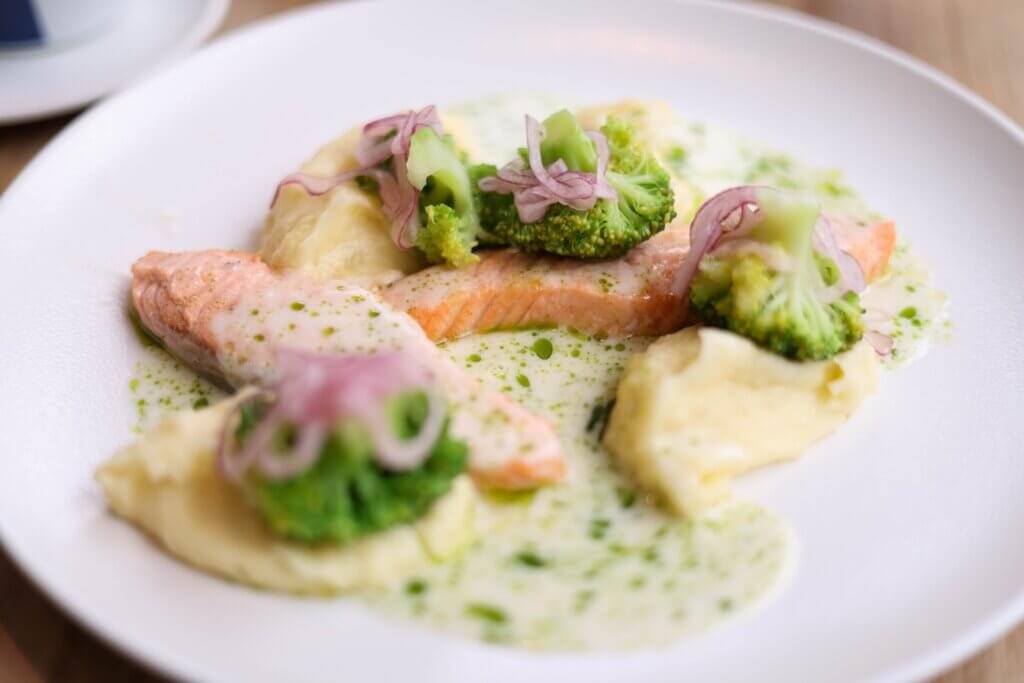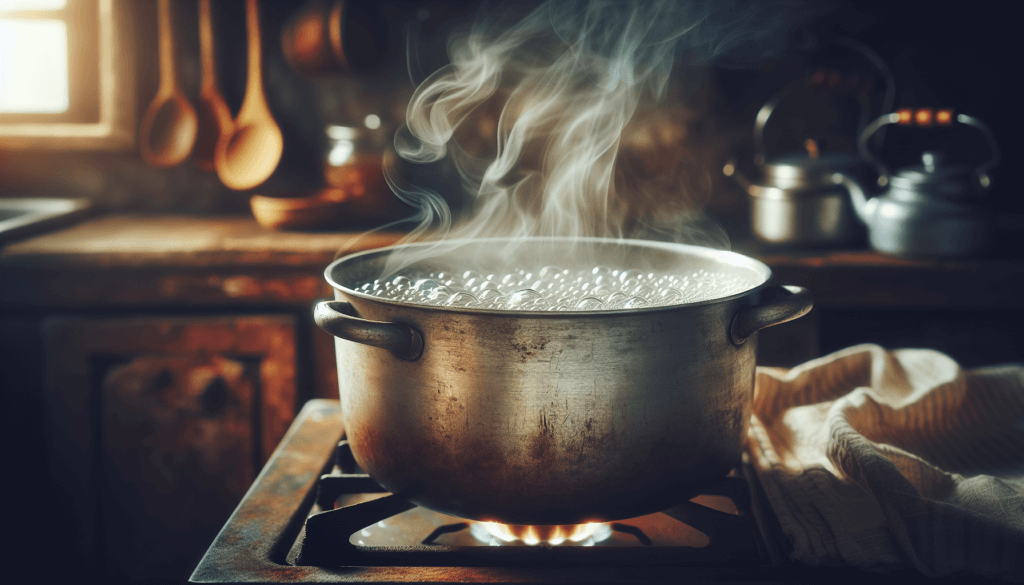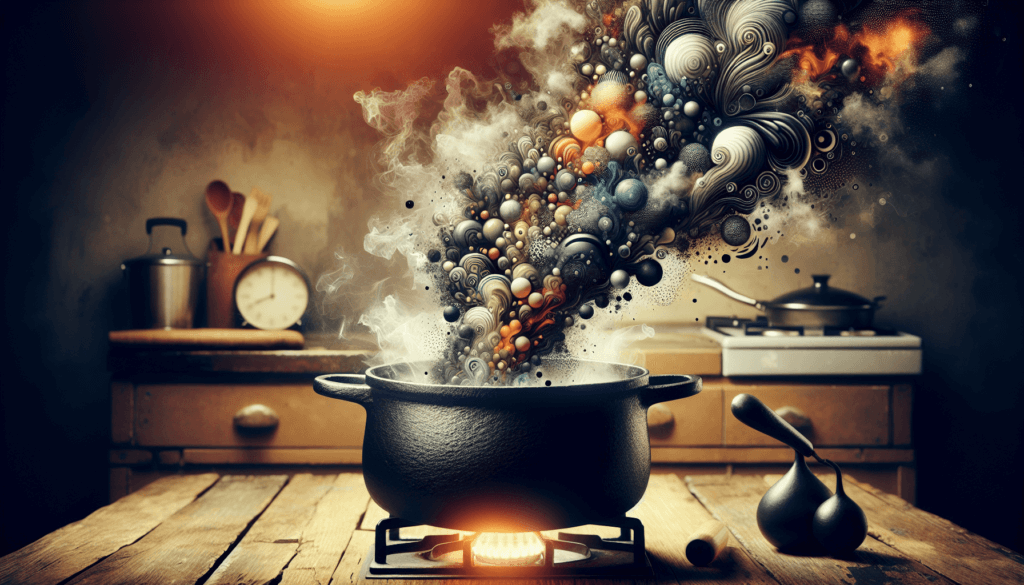Simmer, the latest cooking app to hit the market, is revolutionizing the way you prepare meals at home. With its user-friendly interface and extensive recipe collection, Simmer provides an effortless and enjoyable cooking experience. Whether you’re a seasoned chef or a beginner in the kitchen, this app has something for everyone. From quick and simple weeknight dinners to impressive gourmet dishes, Simmer has you covered. Say goodbye to the days of searching for recipes online and struggling to follow complicated instructions. With Simmer, cooking delicious meals has never been easier. Get ready to unleash your inner chef and elevate your culinary skills with Simmer.
Simmering Food
Simmering is a slow and gentle cooking technique that has been used for centuries to prepare delicious and flavorful dishes. This method involves cooking food in a liquid at a low and steady temperature, allowing the flavors to meld together and the meat to become tender. Simmering is ideal for preparing stews, soups, sauces, and curries, as it brings out the best in both the ingredients and the dish as a whole.
Slow and Gentle Cooking
One of the key benefits of simmering is the slow and gentle cooking process. Unlike boiling or frying, simmering uses low heat to cook the food slowly. This allows the flavors to develop gradually, resulting in a rich and complex taste. The slow cooking also ensures that the food is evenly cooked, preventing any burning or overcooking.
Enhanced Flavors
Simmering is known for enhancing the flavors of ingredients. As the food simmers in the liquid, it absorbs the flavors of the other ingredients, resulting in a harmonious blend of tastes. The long cooking time allows the flavors to meld together, creating a depth of flavor that cannot be achieved through other cooking methods. Whether you’re simmering a hearty beef stew or a fragrant vegetable curry, you can be sure that the flavors will be intensified and delicious.
Tenderize Tough Meats
Simmering is particularly beneficial when it comes to cooking tough cuts of meat. The low and slow cooking process helps to break down the tough fibers in the meat, resulting in tender and succulent results. Whether you’re simmering a pot of beef stew or a batch of pulled pork, you’ll find that the meat becomes incredibly tender and easy to eat. Simmering is a great way to transform inexpensive cuts of meat into melt-in-your-mouth delicacies.
Benefits of Simmering
Simmering offers a range of benefits that make it a fantastic cooking technique to incorporate into your culinary repertoire.
Retains Nutrients
One of the biggest advantages of simmering is that it helps to retain the nutrients in your food. The liquid used for simmering acts as a gentle heat conductor, preserving the vitamins and minerals present in the ingredients. Unlike boiling, where the nutrients can leach out into the water, simmering keeps the nutrients locked in, ensuring that you can enjoy a nourishing and wholesome meal.
Preserves Texture
Simmering is also excellent for preserving the texture of the food. The low and slow cooking process helps to maintain the integrity of the ingredients, ensuring that they don’t become mushy or overcooked. Whether you’re simmering vegetables or proteins, you can expect them to retain their shape and texture, resulting in a more visually appealing and enjoyable dish.
Develops Complex Flavors
One of the most exciting benefits of simmering is its ability to develop complex flavors. The long cooking time allows the flavors to meld together, resulting in a depth and complexity that cannot be achieved through quicker cooking methods. Whether you’re simmering a rich tomato sauce or a fragrant curry, you can be sure that the flavors will be intensified and delightful. Simmering takes your dish to the next level, offering a unique and delicious taste experience.

Simmering Techniques
Simmering can be achieved using a variety of techniques, depending on your cooking setup and preferences. Here are three popular simmering techniques to consider:
Low Heat Cooking
The most traditional and straightforward technique for simmering is to cook the food over low heat on a stovetop. This method requires a cooktop with precise temperature control, allowing you to maintain a gentle simmer. It’s essential to keep an eye on the heat level and adjust it as needed to ensure that the liquid doesn’t come to a full boil. Low heat cooking is suitable for most simmering recipes and offers the most control over the cooking process.
Using a Simmer Plate
If your stovetop doesn’t have a dedicated simmer function or if you find it challenging to maintain a low heat, using a simmer plate can be a helpful alternative. A simmer plate is a heat-conducting disk that can be placed between your cookware and the stovetop. It helps distribute heat evenly and prevents scorching or overcooking. Simply place the simmer plate on the burner, set your pot on top, and adjust the heat to achieve a gentle simmer.
Using a Slow Cooker
For those who prefer a hands-off approach to cooking, a slow cooker is an excellent option for simmering. Slow cookers allow you to set the temperature and cooking time and then walk away, letting the pot work its magic. This method is ideal for busy individuals or those who want to have a hot meal waiting for them at the end of a long day. Slow cookers provide a gentle and consistent heat, resulting in perfectly simmered dishes every time.
Simmering Tools
To achieve the best results when simmering, it’s essential to have the right tools at your disposal. Here are some commonly used tools for simmering:
Stove with Simmer Function
If you have a stove with a simmer function, you’re in luck! This feature allows you to adjust the heat precisely and maintain a steady simmer without the need for additional tools or gadgets. Simply set the burner to the desired temperature, and you’re ready to simmer away.
Simmer Plate
A simmer plate is a valuable tool for controlling heat when simmering on a regular stovetop. It helps to distribute heat evenly and prevent hot spots, ensuring that your food simmers gently and doesn’t scorch. Simmer plates are typically made of heat-conducting materials like cast iron and are placed between the burner and the pot.
Slow Cooker
As mentioned earlier, a slow cooker is an excellent option for simmering, particularly if you prefer a hands-off approach to cooking. Slow cookers provide a consistent and gentle heat, allowing your food to simmer slowly and develop rich flavors. These appliances often come with adjustable temperature settings, making it easy to achieve the perfect simmer.
Dutch Oven
A Dutch oven is a versatile and reliable tool for simmering. Its thick and heavy bottom helps distribute heat evenly, preventing any scorching or hot spots. Dutch ovens are great for simmering stews, soups, and braises, as they can go from stovetop to oven seamlessly. Invest in a high-quality Dutch oven, and you’ll have a go-to pot for all your simmering needs.

Popular Simmering Recipes
Simmering is a versatile cooking technique that can be used to prepare a wide range of delicious dishes. Here are some popular recipes that showcase the benefits of simmering:
Beef Stew with Root Vegetables
Beef stew is a classic dish that is perfect for simmering. The slow and gentle cooking process helps to tenderize the beef and allows the flavors of the vegetables and spices to meld together. Simmering the stew for an extended period allows the flavors to develop, resulting in a hearty and comforting dish that’s perfect for chilly nights.
Chicken Soup
Chicken soup is another beloved dish that benefits from simmering. Simmering a whole chicken or chicken bones with aromatics and vegetables infuses the broth with deep and savory flavors. The long cooking time also helps to extract the nutrients from the bones, resulting in a nourishing and soul-soothing soup that’s perfect for when you’re feeling under the weather.
Tomato Sauce
Simmering is a key step in making a delicious tomato sauce. Simmering tomatoes, onions, garlic, and herbs together allows the flavors to meld and develop, resulting in a robust and flavorful sauce. The slow cooking process also helps to thicken the sauce naturally and reduces any acidity in the tomatoes, resulting in a smooth and balanced sauce that’s perfect for pasta dishes.
Vegetable Curry
Simmering is an excellent technique for making flavorful vegetable curries. The slow cooking allows the spices and vegetables to marry together, resulting in a harmonious blend of flavors. Simmering the curry for an extended period also helps to soften the vegetables while maintaining their texture, resulting in a delicious and comforting dish that’s perfect with rice or bread.
Simmering for Health
Simmering is not only a delicious cooking method but also a healthy one. Here are some health benefits of simmering your food:
Retains Nutrients
Simmering helps to retain the nutrients in your food, ensuring that you reap the full benefits of the ingredients you use. The slow and gentle cooking process, combined with the use of a liquid, helps to preserve the vitamins and minerals present in the food. Unlike boiling, where the nutrients can leach out into the water, simmering keeps them locked in, resulting in a nourishing and wholesome meal.
Reduced Fat Content
Simmering is a cooking technique that requires minimal added fats or oils. The natural moisture from the ingredients and the liquid used for simmering help to keep the dish moist and flavorful without the need for excessive fats. This makes simmered dishes a healthier choice, particularly for those watching their fat intake or looking for lighter meal options.
Easy on Digestion
The slow and gentle cooking process involved in simmering makes the food easier to digest. The low heat helps to break down complex proteins and fibers, making them more readily absorbed by the body. This is especially beneficial for individuals with digestive sensitivities or those who have difficulty breaking down certain foods. Simmered dishes can be comforting and nourishing without putting undue stress on your digestive system.

Simmering for Flavor
Simmering is not just about health; it’s also about creating incredible flavors in your dishes. Here’s how simmering can enhance the taste of your food:
Natural Flavor Enhancement
Simmering helps to enhance the natural flavors of the ingredients you use. The slow and gentle cooking process allows the flavors to meld together, resulting in a harmonious blend of tastes. Whether you’re simmering meat, vegetables, or legumes, you’ll find that the flavors become intensified and more pronounced, turning a simple dish into something extraordinary.
Infusion of Herbs and Spices
Simmering is an excellent way to infuse your food with the flavors of herbs and spices. As the ingredients simmer in the liquid, the herbs and spices release their essential oils, infusing the dish with their aromatic and flavorful properties. This allows you to create complex and nuanced dishes that are bursting with taste. Whether you’re using bay leaves, cinnamon, or fresh herbs like rosemary and thyme, simmering helps to extract the full potential of these ingredients.
Umami Development
Umami, the fifth taste sensation, is often described as savory, meaty, or mushroom-like. Simmering is a fantastic way to develop umami in your dishes. The low and slow cooking allows the ingredients to release their natural umami compounds, resulting in a rich and satisfying taste. Whether you’re simmering a hearty beef stew or a mushroom and vegetable curry, you’ll find that the umami flavors are intensified and take your dish to the next level.
Tips for Perfect Simmering
To achieve the best results when simmering, here are some essential tips to keep in mind:
Maintain Low and Constant Heat
Consistency is key when it comes to simmering. It’s essential to maintain a low and constant heat throughout the cooking process. Avoid turning up the heat too high, as this can lead to boiling or scorching. Use a thermometer or adjust the burner to the lowest setting to achieve the desired temperature. This slow and gentle heat will allow the flavors to develop and the food to cook evenly.
Cover with Lid
Covering your pot with a lid is crucial for maintaining the moisture and heat during simmering. The lid helps to trap the steam, preventing any evaporation and ensuring that the food remains moist and tender. It also helps to increase the heat retention, allowing the ingredients to cook more efficiently. Keep the lid on throughout the simmering process, only removing it briefly to check on the progress or stir the dish.
Regularly Check and Stir
While simmering requires a low and slow cooking process, it’s still important to check on the food regularly and give it a gentle stir. This helps to ensure that everything is cooking evenly and prevents any sticking or burning. Use a wooden spoon or ladle to stir the ingredients gently, being careful not to break up large pieces of meat or delicate vegetables. This simple step will help to distribute the flavors and heat more evenly, resulting in a better-tasting dish.

Simmering vs. Boiling
Simmering and boiling are both cooking techniques that involve the use of liquid, but there are several key differences between the two. Here’s how simmering compares to boiling:
Temperature Difference
The primary difference between simmering and boiling is the temperature at which they occur. Simmering occurs at a lower temperature, typically around 180-205°F (82-96°C), whereas boiling is at a higher temperature, around 212°F (100°C). Simmering involves gentle cooking with small bubbles breaking the surface, whereas boiling involves vigorous bubbling and motion throughout the liquid.
Cooking Time
Simmering is a longer cooking process compared to boiling. While boiling is suitable for quickly cooking foods, simmering is best for slow and gradual cooking. Simmering allows the flavors to develop over time and helps to tenderize tough cuts of meat. Boiling, on the other hand, is ideal for blanching vegetables, cooking pasta, or making quick sauces.
Texture and Taste
Simmering and boiling also result in different textures and tastes in the food. Simmering produces tender and moist results, particularly when it comes to meats and vegetables. The slow cooking process allows the flavors to meld together, resulting in a rich and complex taste. Boiling can lead to firmer and sometimes overcooked textures, making it more suitable for certain ingredients and dishes.
Simmering Variations
While simmering is a versatile and flavorful cooking technique on its own, it can also be combined with other ingredients or liquids to create variations. Here are a few popular simmering variations to try:
Simmering with Wine
Simmering with wine is a fantastic way to add depth and richness to your dishes. The alcohol in the wine evaporates during the cooking process, leaving behind its flavors and aromas. Simmering meat or vegetables with wine can result in a complex and flavorful dish, perfect for special occasions or when you want to elevate a simple recipe.
Simmering with Broth
Using broth as a cooking liquid can add a savory and aromatic element to your dish. Simmering ingredients in broth, whether it’s vegetable, chicken, or beef, infuses the dish with its flavors, resulting in a delicious and well-rounded taste. This variation is particularly popular in soups, stews, and braised dishes, where the broth acts as the base for the entire dish.
Simmering with Coconut Milk
For those who prefer a creamier and slightly sweet flavor profile, simmering with coconut milk is a great option. Coconut milk adds richness and a subtle tropical taste to your dishes. This variation is commonly used in curries, soups, and desserts, as it creates a luscious and flavorful sauce or base. Simmering with coconut milk is a wonderful way to experiment with different cuisines and add a touch of exoticism to your meals.
Simmering is a versatile and rewarding cooking technique that offers numerous benefits for both your health and palate. Whether you’re simmering a comforting stew, a fragrant soup, or a flavorful curry, you’ll find that the slow and gentle cooking process enhances the taste and texture of your dishes. With the tips and variations provided, you’re equipped to create delicious and unforgettable meals through the art of simmering. So, grab your cooking tools, turn on the heat, and get ready to simmer your way to culinary excellence.



